Medication Swelling Assessment Tool
Assess Your Symptoms
This tool helps identify potential risks related to medication-induced swelling. It is not a substitute for professional medical advice.
Your Risk Level
Recommended Actions
Swelling in your hands or feet after starting a new pill can feel harmless-until it isn’t. Medication‑induced swelling often signals that a drug is doing more than its intended job, and knowing when to act can stop a minor nuisance from becoming a serious health issue.
What Exactly Is Medication‑Induced Edema?
Medication‑induced edema is a buildup of fluid in the soft tissues that occurs as an adverse reaction to a prescription or over‑the‑counter drug. It can appear as pitting swelling around the ankles, a tight feeling in the soles, or a reddish, tender rash on the palms. Medical literature splits the condition into two main flavors: pedal edema (lower‑leg swelling) and hand‑foot syndrome (HFS), also called palmar‑plantar erythrodysesthesia.
Why Do Some Drugs Cause Swelling?
Two physiological pathways drive the phenomenon:
- Vasodilator‑induced fluid shift: Drugs that widen blood vessels-such as calcium channel blockers, nitrates, or gabapentinoids-lower peripheral resistance and raise capillary pressure, forcing fluid out of vessels into the surrounding tissue.
- Sodium‑retention: NSAIDs, corticosteroids, and certain diabetes medicines blunt the kidneys’ ability to excrete sodium, trapping water in the bloodstream and eventually leaking into the extremities.
Understanding the mechanism helps clinicians choose the right fix, whether it’s swapping the medication, adding a diuretic, or adjusting the dose.
Common Culprits
Not every pill carries the same risk. Below is a quick snapshot of drug classes that frequently show up in patient reports.
| Drug class | Typical swelling site | Incidence (approx.) | First‑line management |
|---|---|---|---|
| Calcium channel blockers | Both ankles (pedal edema) | 5‑15% (dose‑dependent) | Switch class or add low‑dose ACE inhibitor |
| NSAIDs | Feet & lower legs | 1‑3% (long‑term use) | Reduce dose, consider alternative analgesic |
| Capecitabine (chemotherapy) | Palm‑soles (HFS) | 50‑60% (cumulative dose) | Dose reduction, pyridoxine trial, urea cream |
| Thiazolidinediones | Both ankles, sometimes hands | 4‑7% within 3 months | Discontinue or switch antidiabetic |
| Gabapentinoids (e.g., pregabalin) | Lower extremities, occasional hand edema | 3‑5% (dose‑related) | Adjust dose, consider alternative neuropathic agent |
Spotting the Red Flags
Most swelling is mild and can be managed at home, but certain signs demand a prompt call to your healthcare provider:
- Swelling that appears on only one side-possible deep‑vein thrombosis.
- Sudden weight gain (>2 lb in 24 h or >5 lb in a week).
- Chest pain, shortness of breath, or a feeling of “tightness” in the throat-possible heart failure.
- Blistering, ulceration, or fever on the palms/soles-advanced hand‑foot syndrome (Grade 3‑4).
- Reduced urine output (<500 ml/24 h) or swelling accompanied by swelling of the abdomen.
The American College of Cardiology (2023) stresses that waiting more than 24 hours after any of these appear can turn a reversible problem into a life‑threatening emergency.
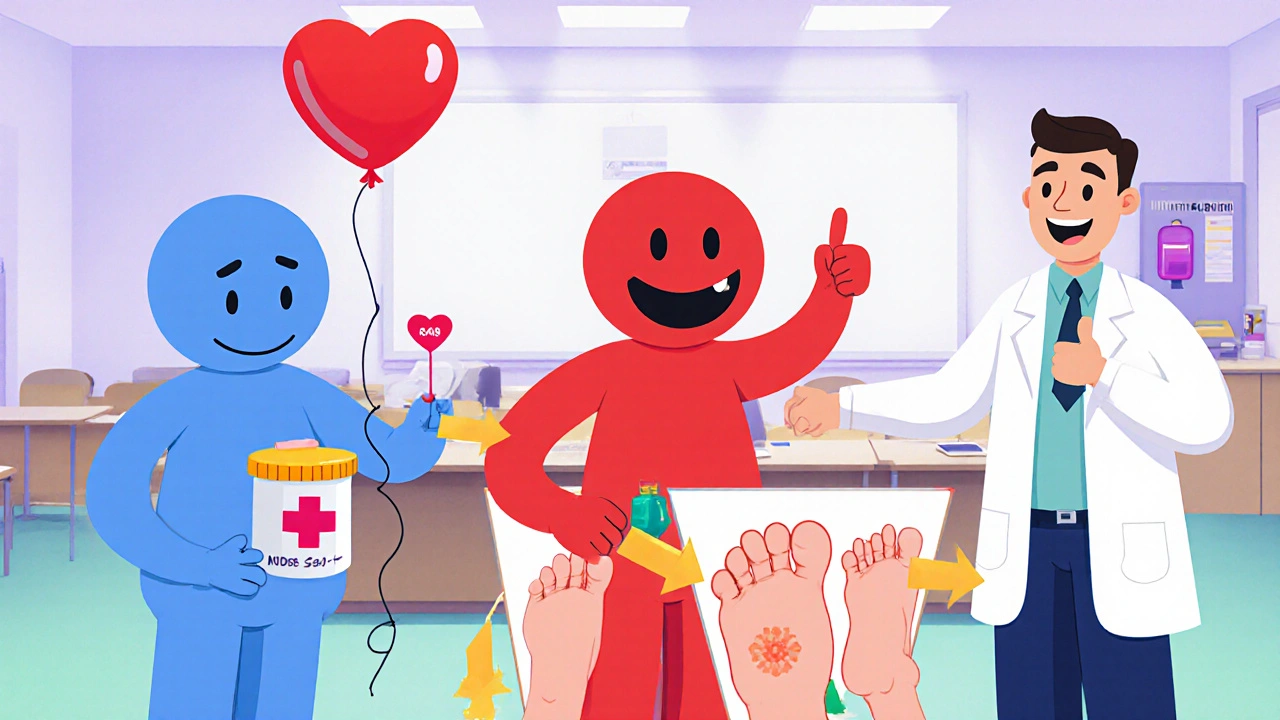
How to Self‑Manage Mild Cases
If the swelling is mild, symmetrical, and not linked with the red flags above, try these evidence‑backed steps before picking up the phone:
- Elevate the affected limbs above heart level for 30 minutes, three times a day. Studies show a 15 % reduction in fluid volume within 48 hours.
- Wear graduated compression stockings (20‑30 mmHg). A 2021 trial reported a 40 % drop in perceived swelling severity.
- Cut sodium to <2500 mg per day. Lowering salt intake trims fluid retention by up to 25 %.
- Shift the timing of any diuretic to early evening to avoid nocturnal bathroom trips.
- Choose roomy, cushioned footwear with an extra 1‑1.5 cm depth to relieve pressure on the soles.
If you’re on a calcium channel blocker, ask your doctor about adding a low‑dose ACE inhibitor. The European Society of Cardiology (2022) notes that this combo resolves edema in roughly two‑thirds of patients within two weeks.
When You’re Dealing With Hand‑Foot Syndrome
Hand‑foot syndrome (HFS) is a distinct form of drug‑induced swelling that targets the palms and soles, often accompanied by redness, tingling, and in severe cases, blistering. It’s most commonly linked to chemotherapy agents like capecitabine and some targeted therapies.
Management starts with dose modification-often a 20‑30 % reduction-followed by supportive care:
- Cool compresses for 15 minutes, several times a day, to soothe burning sensations.
- Urea 10 % cream applied twice daily (evidence for a 25 % risk reduction in prophylactic trials).
- Pyridoxine (vitamin B6) 300 mg daily-mixed results, but some patients report relief.
- If you prefer natural options, arnica montana gel has shown a modest 28 % improvement in symptom scores compared with placebo.
ASCO (2022) recommends contacting an oncologist within 24 hours if you notice blistering, ulceration, or fever-these are signs of Grade 3 or higher HFS, which may require temporary drug hold.
When to Pick Up the Phone
Here’s a quick decision tree you can keep on the fridge:
- Any red‑flag symptom? Call immediately (within 24 h).
- New swelling within 72 hours of a new prescription? Call within 2 days-there’s a 78 % chance it’s drug‑related.
- Mild, symmetrical swelling that’s been present >1 week? Schedule a routine visit, but monitor for escalation.
- HFS Grade 2 (pain affecting daily tasks)? Call your oncologist within 24 h; consider dose reduction.
Delays matter. FDA data from 2023 shows that 37 % of serious outcomes stem from patients waiting an average of eight days before seeking help.
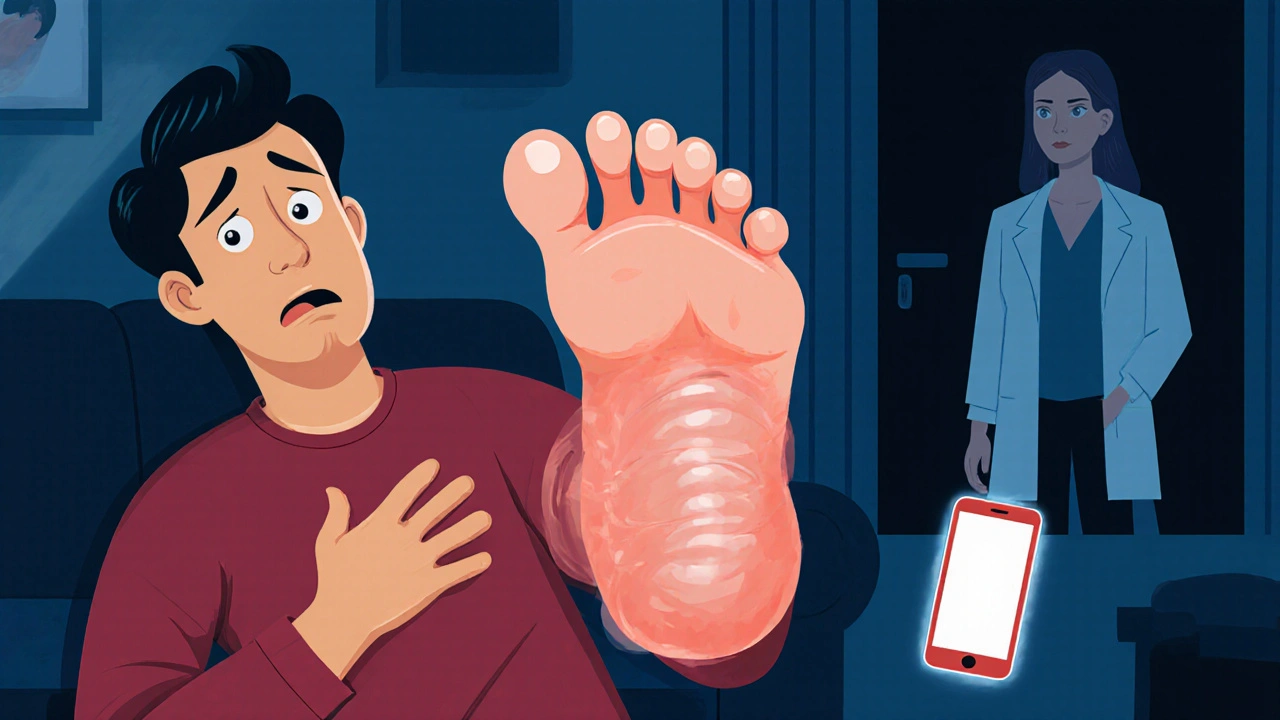
Prevention: Can You Stop It Before It Starts?
Prevention isn’t always possible, but you can lower the odds:
- Start calcium channel blockers at the lowest effective dose (2.5‑5 mg amlodipine) - incidence drops by 60 %.
- Ask for baseline labs (renal function, electrolytes) before beginning high‑risk drugs.
- Enroll in a patient‑education program. A 2023 study found that educated patients are 3.2 times more likely to report swelling early.
- For chemotherapy, begin prophylactic urea cream two days before the first dose.
Even with the best preventive steps, keep a watchful eye. Most cases (89 %) resolve within four weeks once the trigger is handled, but chronic lymphedema can linger in 11 % of patients, requiring long‑term care.
Bottom Line Checklist
- Identify if swelling is bilateral, painful, or accompanied by shortness of breath.
- Note when the symptom started relative to a new medication.
- Look for skin changes: redness, blistering, ulceration.
- Use elevation, compression, and low‑salt diet for mild cases.
- Contact your doctor within 24 hours for any red‑flag or Grade 2+ HFS.
Frequently Asked Questions
What drugs most often cause ankle swelling?
Calcium channel blockers (especially amlodipine), NSAIDs, thiazolidinediones, and gabapentinoids are the top culprits. The risk rises with higher doses and longer treatment duration.
Is hand‑foot syndrome the same as regular edema?
No. HFS specifically involves the palms and soles, often with tingling, redness, and sometimes blistering. Regular edema usually appears as pitting swelling in the lower legs.
Can I prevent swelling if I’m starting a calcium channel blocker?
Start at the lowest effective dose (2.5-5 mg). Pairing the blocker with a low‑dose ACE inhibitor or an ARB can cut the incidence by up to 70 %.
When should I be alarmed about swelling on my feet?
Call your doctor immediately if the swelling is one‑sided, comes with chest pain or shortness of breath, appears with rapid weight gain, or is accompanied by fever or skin ulceration.
Do compression stockings really help?
Yes. A 2021 randomized trial showed a 40 % reduction in edema severity when patients wore 20‑30 mmHg stockings for two weeks.
Is vitamin B6 effective for hand‑foot syndrome?
Evidence is mixed. Some small studies suggest modest relief, but a 2022 Cochrane review found no statistically significant benefit.
Swelling from medication isn’t something you should just shrug off. Spot the warning signs, try the home strategies, and know precisely when a quick call to your doctor can keep you from a bigger problem.

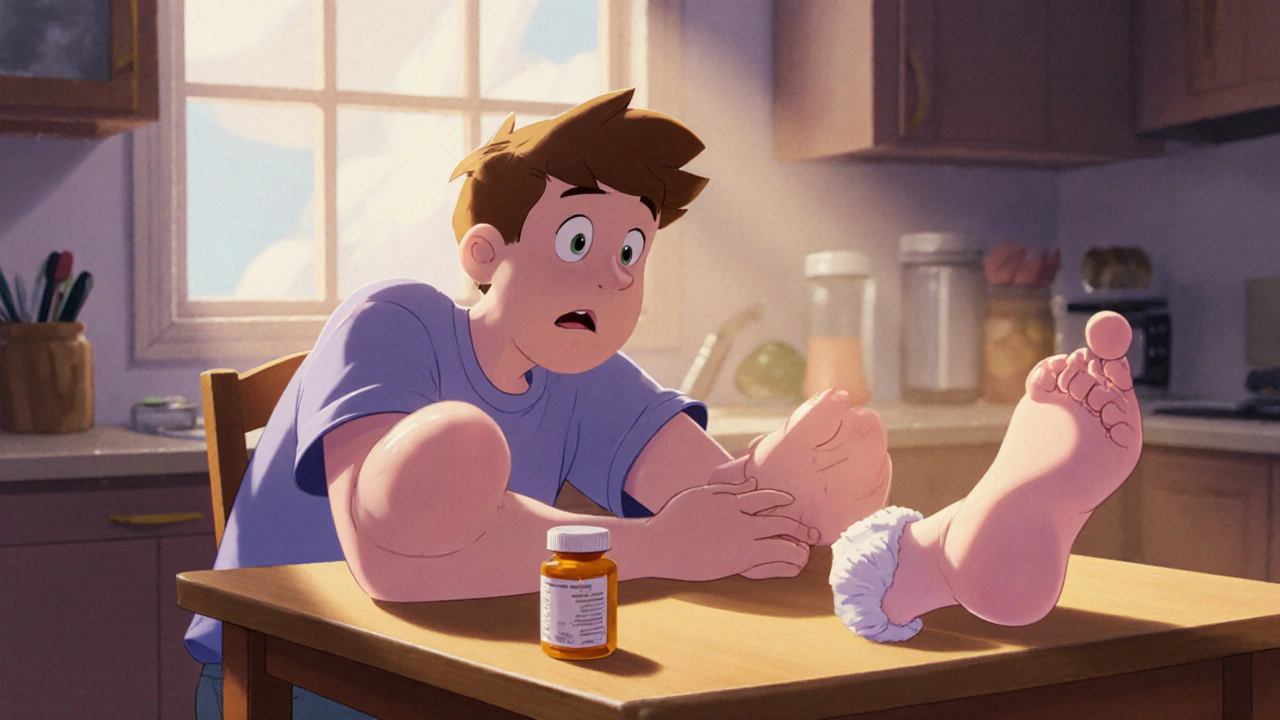
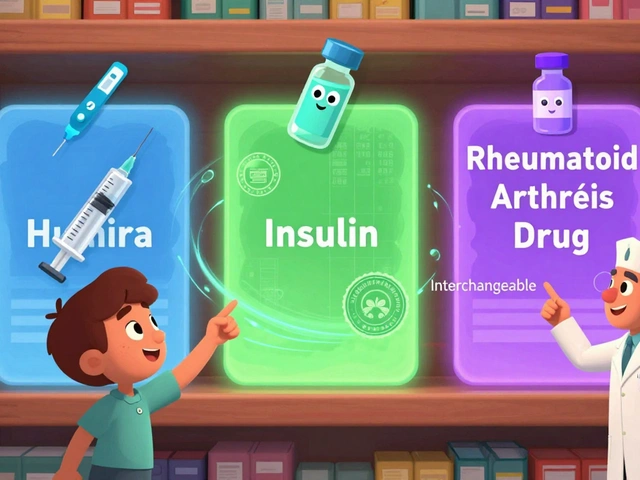
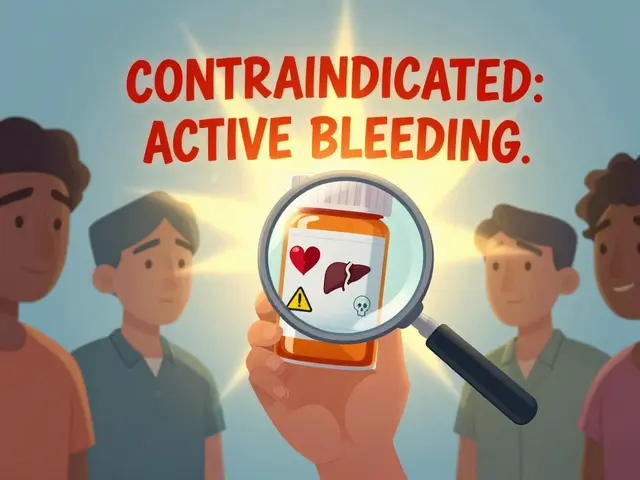
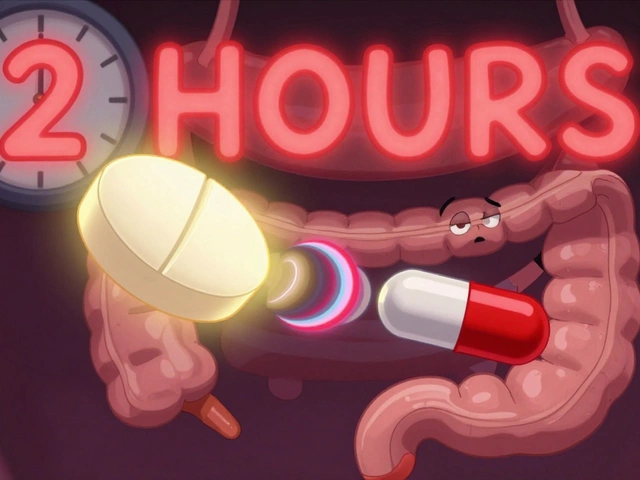


When a pill starts making your hands feel like balloons you should pause and think about why the body is speaking to you. The swelling is not just a random nuisance it is a signal that a chemical balance has been tipped. Many drugs widen blood vessels and let fluid escape into the tissue. Others force the kidneys to hold onto sodium and water builds up like a small reservoir. The result is that the feet and palms can swell in ways that feel uncomfortable and look strange. This is especially true for calcium channel blockers where the ankles become puffy after weeks of use. NSAIDs can also trap salt making the lower legs look like they belong to a different person. Chemotherapy agents such as capecitabine give a hand‑foot syndrome that feels like you stepped on hot coals. If you notice any redness painful blisters or a feeling of tightness you should not wait. The literature tells us that a sudden weight gain of a few pounds in a day is a red flag. Likewise swelling on just one side could hint at a clot and needs urgent attention. Heart failure can also hide behind swelling so shortness of breath should be mentioned to a doctor. Simple measures like elevating the legs and reducing salt help but do not replace professional advice. Some doctors add a low dose ACE inhibitor to counteract the edema caused by calcium blockers. Others may lower the dose or switch to a different class entirely. Listening to these bodily cues can prevent a small problem from becoming a serious health issue. So keep an eye on your extremities and act when the swelling seems out of the ordinary.
It is imperative to recognize that medication induced edema may necessitate a therapeutic adjustment in order to mitigate adverse outcomes
I think it definetly helps to be aware of these side effects it can save you a lot of trouble later on especially if you notice swelling early then you can talk to your doc about alternatives or dosage changes
Oh great another reason to love my meds :) nothing like a little hand‑foot syndrome to keep life interesting